| Year-round Resident | |
| Has Nested in Park |
Northern Cardinals are widespread throughout the eastern half of the United States. They are year-round residents at Monticello Park and nest there each year.
Where to See Them in the Park
You can see cardinals virtually anywhere in the park. They forage in low vegetation or on the ground, and they frequently go into the stream to bathe and drink.
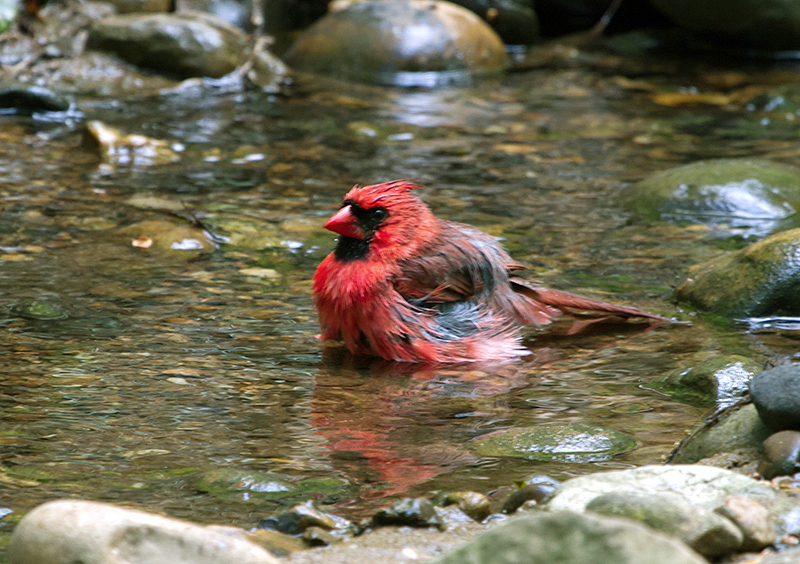
Physical Description
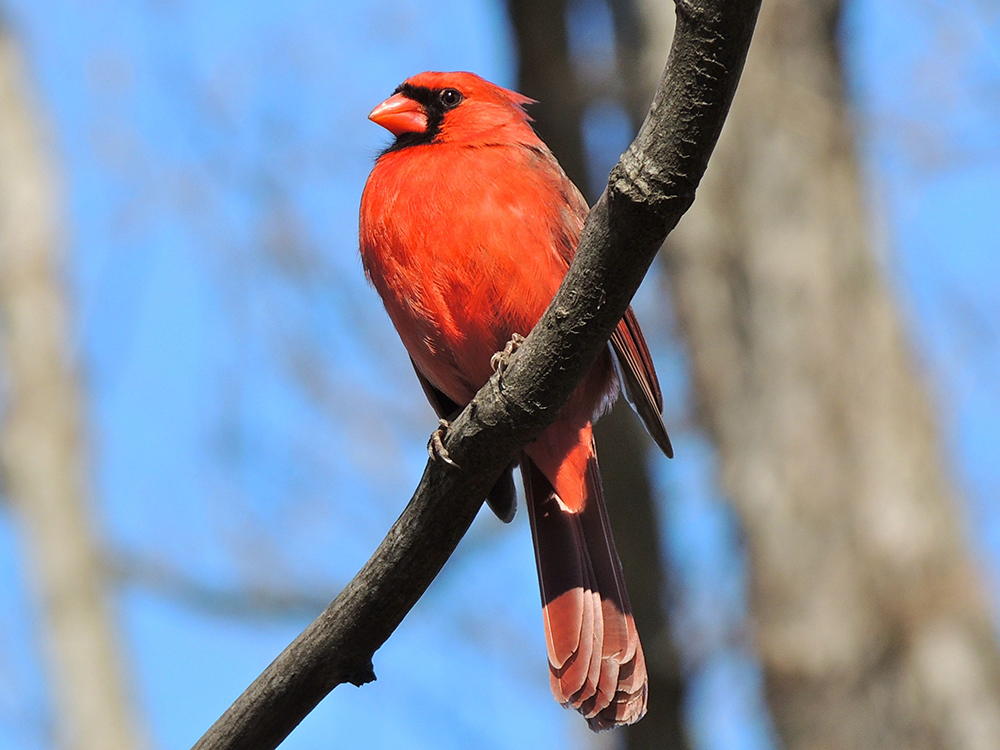
The Northern Cardinal is the state bird of Virginia (and six other states). A cardinal appears on some Virginia license plates and on signs on the border between Virginia and other jurisdictions, so most people in the state are familiar with them.
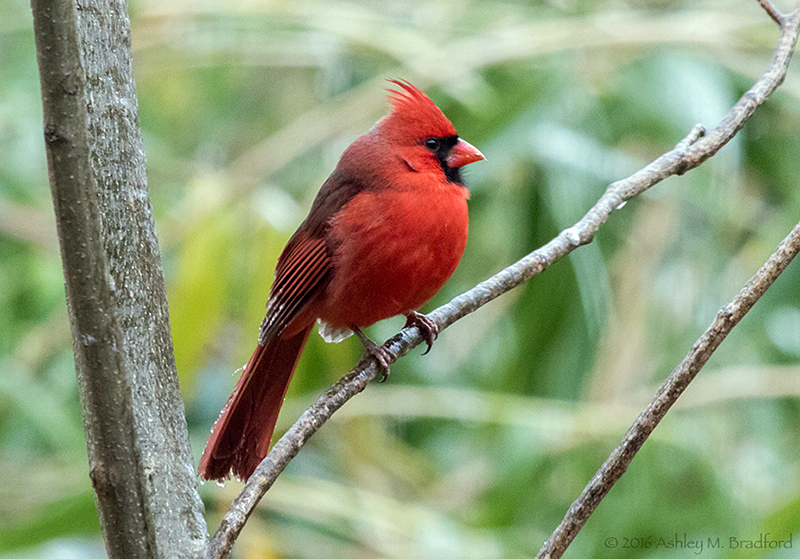
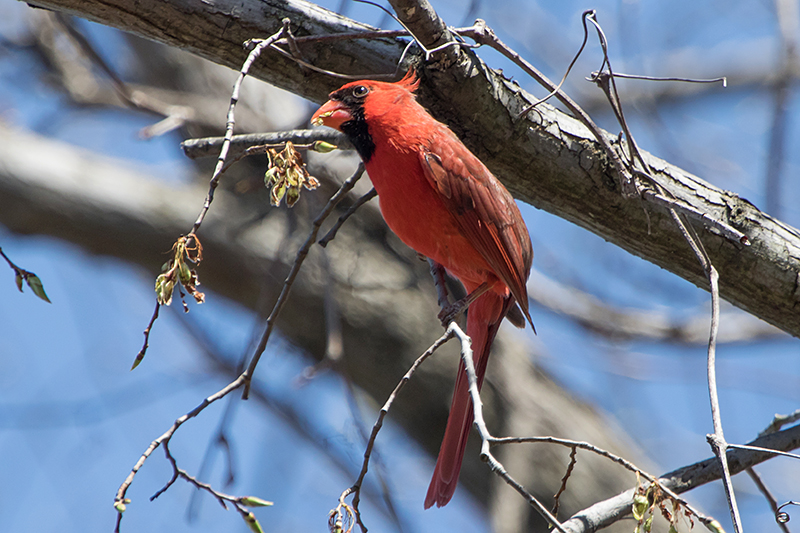
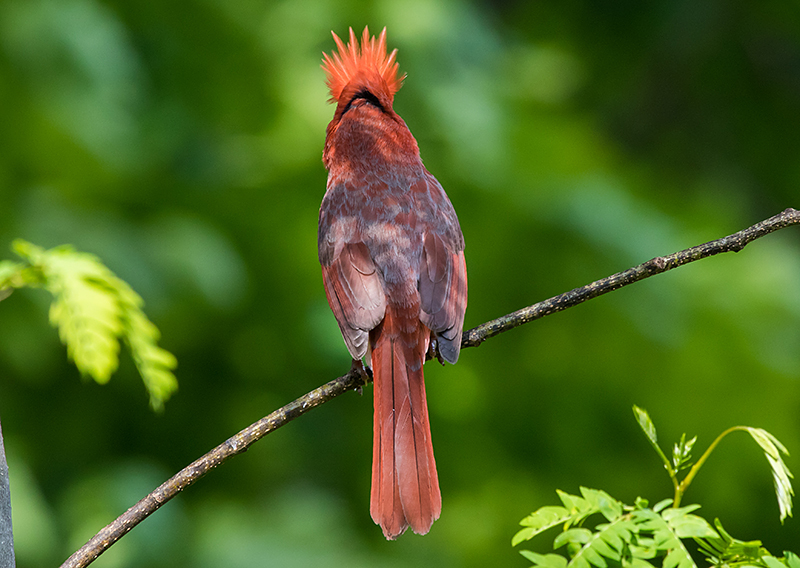
The adult male "red bird" has mostly red feathering, including a red crest which it sometimes raises. The bright red bill is large (for cracking seeds) and bordered by black feathering.
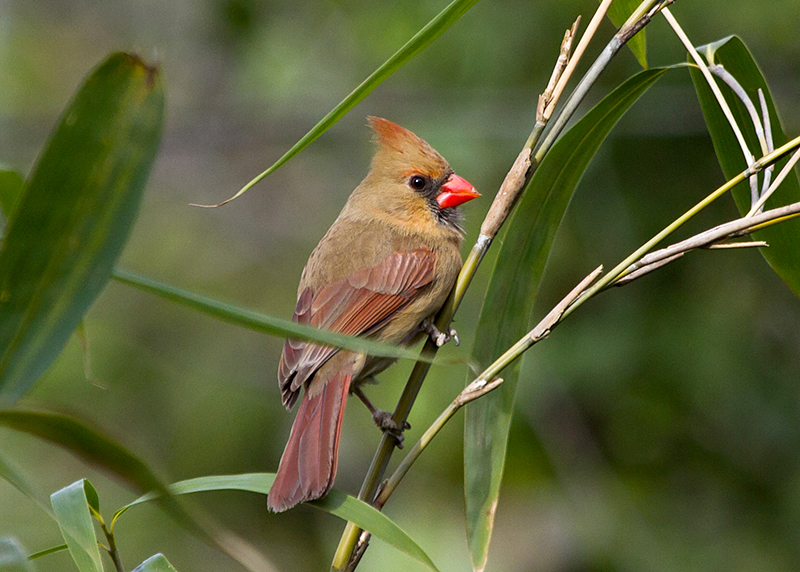
Adult female cardinals have a light brown breast and a dull brown back. Their crest, wings, and tail have red feathering. They have a large red bill bordered in dark feathering.

Cardinals nest at Monticello Park, and you sometimes can see them gathering nesting material. The female usually builds the nest and is sometimes assisted by the male.

The nest is cup-shaped and often placed in a bush below eye level, sometimes in an area near a lot of foot traffic. They have nested in a bush near the Beverley Drive entrance and as well as next to the stream at the other end of the park. The nest is made of leaves, grass, vines, rootlets, and other materials. Cardinals usually lay two to five eggs, and they can have one to four broods per year. The incubation period lasts slightly less than two weeks. Newly-hatched cardinals stay in the nest for about ten days.
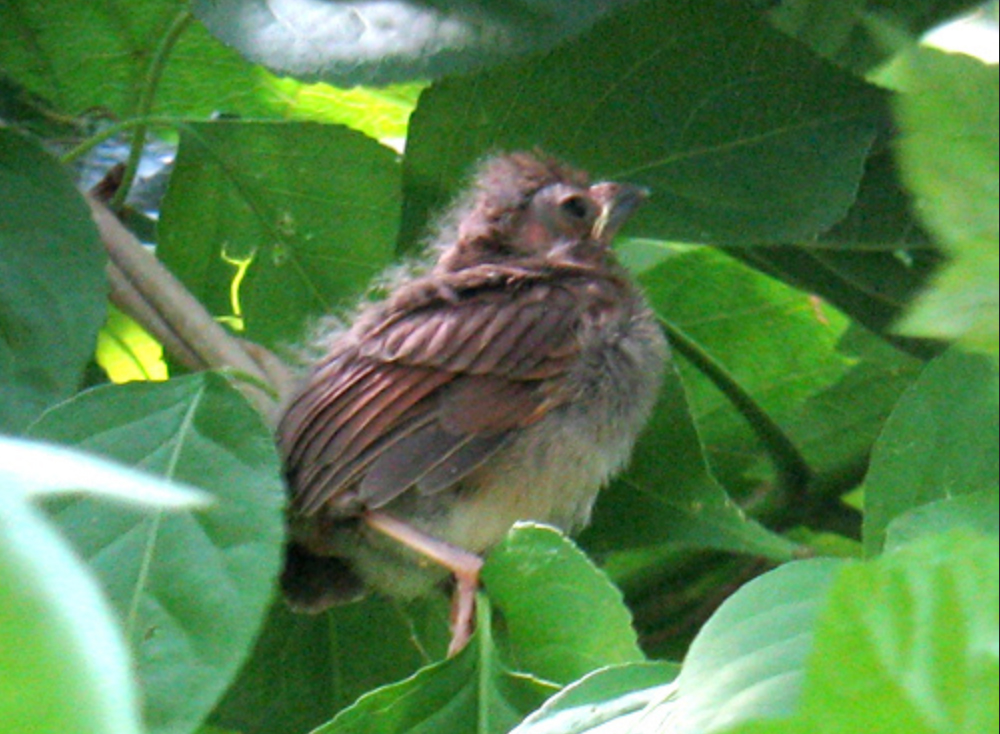
The fledgling stage lasts three to four weeks. When a cardinal comes out of the nest, it is darker brown than the female. Protruding from the area where its bill attached to its face are bits of yellow skin called flanges, which resemble tiny lips. For many bird species, the inside of the mouth (or gape) of baby birds is a bright color that is the target at which adult birds stuff food. When young cardinals become independent, the flanges disappear.
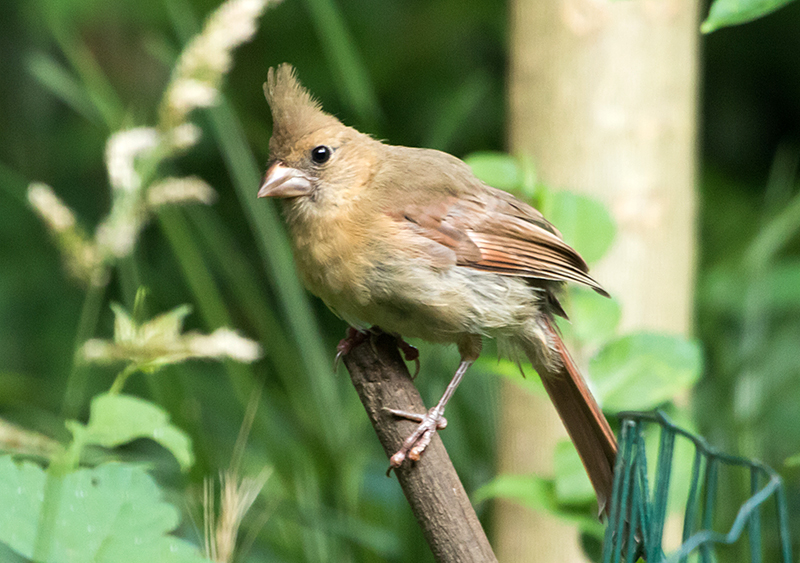
Hatch-year cardinals start to grow red feathers in the wings and tail, but their bill is dark rather than bright red.
Vocalizations
The song of the cardinal consists of a variety of loud whistles. One of the common songs sounds like purty-purty-purty. Both male and female cardinals sing — female cardinals sometimes sing when sitting on their nest. With most North American songbird species, only the male sings. The cardinal's call note is a single loud chip, and you frequently hear if from both males and females.
Hear the vocalizations of the Northern Cardinal.
Notes
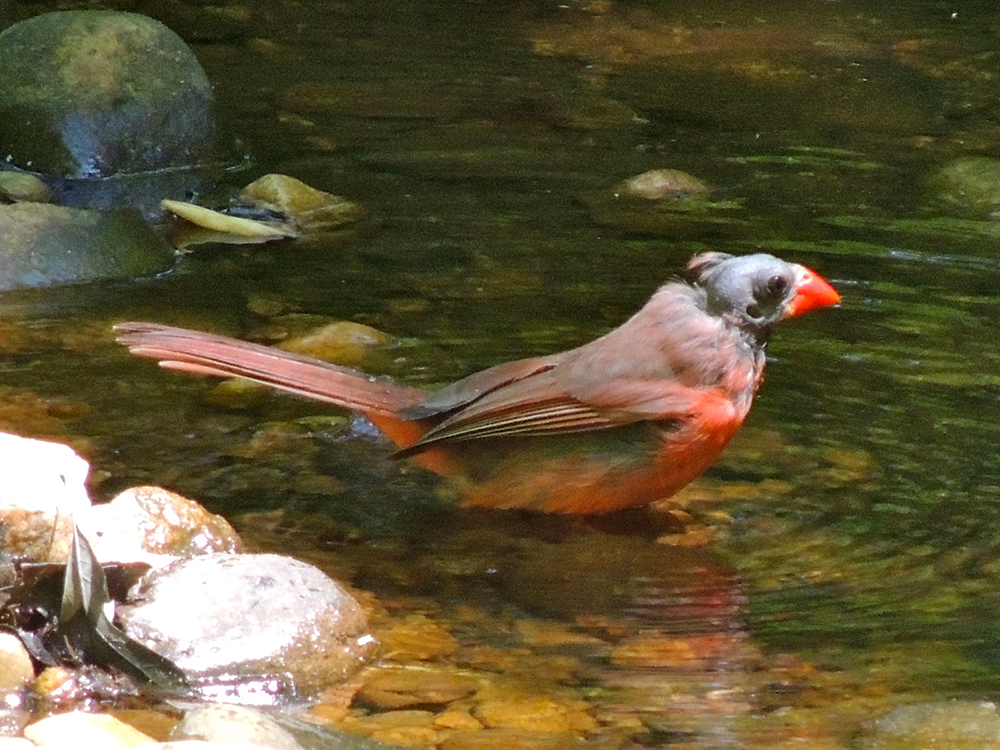
Sometimes, a cardinal with unusual plumage will show up at Monticello. On a few occasions, bald-headed cardinals have visited the park. These birds seemed to be healthy, and one bald male was accompanied by a female. Nobody is sure why some birds lack feathering on their head. Some might be undergoing an irregular molt. The baldness also might be caused by something that gets into their head feathers and causes them to fall out.
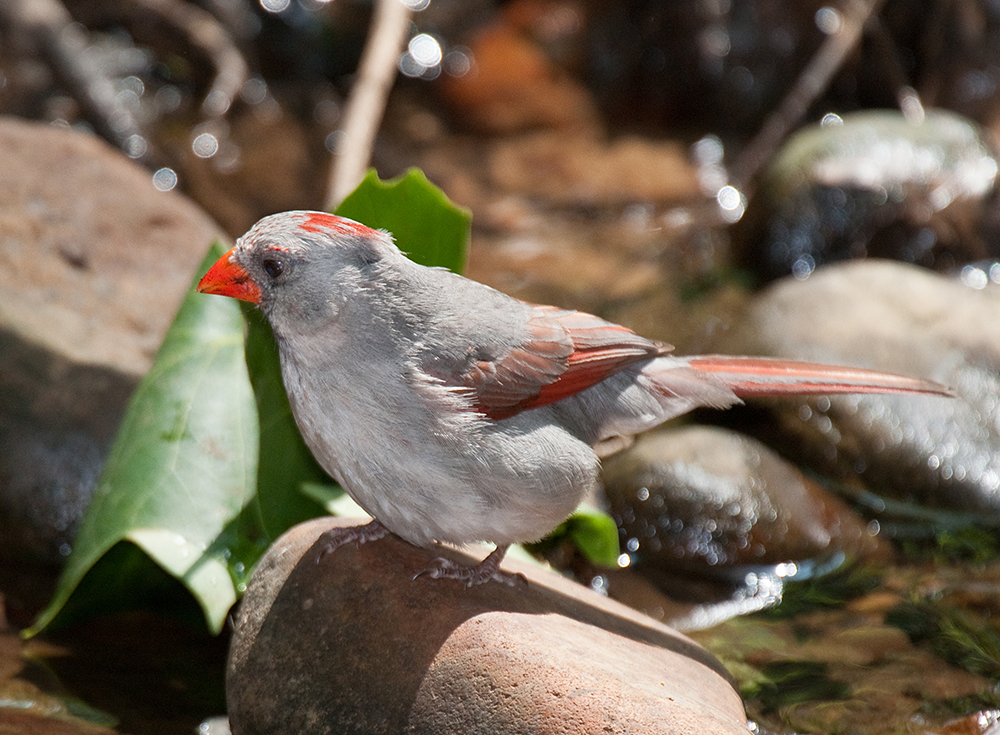
An even more unusual cardinal at Monticello was a female whose feathers were gray instead of brown. She had a deficiency of phaeomelanin, a pigment responsible for red and yellow coloration, and she became known as "Gray Girl". All human bodies contain phaeomelanin, and red-haired people have an especially high level of it. David Sibley wrote an article about color abnormalities in cardinals, including those lacking phaeomelanin. A video about Gray Girl is on YouTube.
Origin of Names
Common Name: Northern to distinguish it from other birds called cardinals found south of the United States. Cardinal because cardinals in the Catholic Church wore red robes.
Genus and Species Names: Cardinalis means important.
Northern Cardinal video footage
Return to the Index
